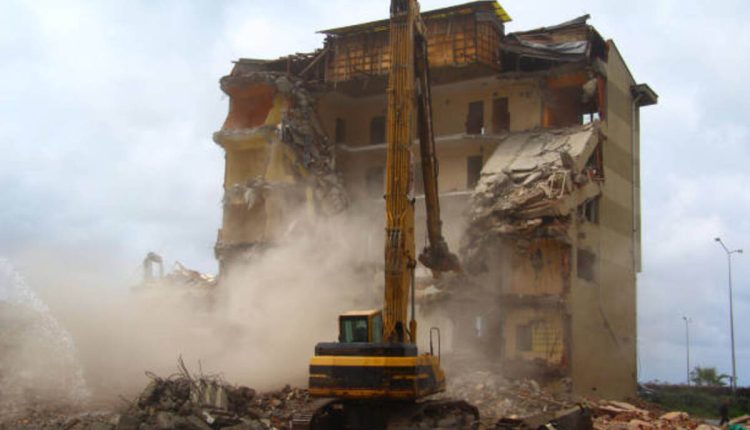Explosive demolition may seem daunting when faced with leveling a skyscraper, but this technique makes demolition simple. The best guide to finding Main Street Demolition Gilbert.
Explosive demolition entails placing and detonating explosive charges strategically inside structures to bring about their collapse – one of the most impressive engineering feats you will ever witness!
It’s Fast
As its name implies, explosive demolition is much faster than non-explosive methods such as wrecking balls, sledgehammers, or excavation equipment. Demolition experts can be exact in placing their charges to ensure a building or structure collapses precisely where and how they desire.
Once blasters have pre-weakened a structure with explosions, they can then detonate a main charge, known as an implosion, which will cause it to collapse without harming surrounding buildings or infrastructure. This method is particularly helpful in urban settings where structures are close together, and it is also commonly used against tall chimneys, bridges, or other large-scale buildings that need to be brought down.
Though a building implosion may appear like a chaotic scene of billowing smoke clouds and fiery debris, it is actually one of the most meticulously planned engineering feats you will ever witness. Blasters carefully plan which explosives to detonate at what time and sequence so that structures can fall back into their footprints with minimal disruption to surrounding areas. Once collapsed, crews quickly clear away any remaining debris for safe disposal—this process is far faster than traditional methods like wrecking balls and also requires far fewer people’s power.
It’s Safe
At first glance, demolition work can be dangerous, yet with proper precautions in place and an approach that prioritizes safety can reduce potential dangers significantly. Non-explosive methods like wrecking balls may take days to demolish a large structure, while explosive demolition takes only seconds by knocking out critical supports inside the building and timing its detonations explosions strategically – like felling trees but in reverse; controlled collapse means reduced risks of falling debris striking people or nearby structures.
An expert demolition crew will create a comprehensive plan that outlines the placement and sequence of explosive charges according to the structure and its location. This assessment includes looking for potential risks, such as houses, hospitals, or roads in close proximity that could be affected by explosions, as well as providing a health and safety management plan that covers every stage of the demolition project.
Blast mats must also be used at the site to stop flying debris and protect those involved in its demolition. Furthermore, proper cleanup after each demolition process is crucial to reduce environmental impacts associated with its completion, such as when structures previously-stored hazardous chemicals on site are demolished by certified contractors and safely disposed of.
It’s Effective
Although it can be relatively straightforward to bring down stone walls with a sledgehammer or level five-story buildings with wrecking balls and excavators, larger structures often require explosive demolition as an effective strategy. Explosive demolition uses explosive charges that damage key points within structures before gravity brings on collapse – this method is highly efficient while helping limit any collateral damage in its path.
Explosive demolition can be particularly effective when large, sturdy structures need to be demolished quickly—such as towers, bridges, and other high-rise buildings. It allows this task to be accomplished with minimal disruption to adjacent structures and services, making it suitable for urban settings with limited space.
Experienced demolition engineers must prepare the site, establish a safe perimeter, and place and detonate explosive charges throughout the structure in a controlled fashion. This involves targeting key support points before strategically weakening them to keep collapse under control—this process typically only takes seconds, significantly decreasing demolition time. Furthermore, explosions can quickly and effectively eliminate hazardous materials inside, such as asbestos and lead paint, before quickly clearing away debris from the site, as previously would have been the case.
It’s Dangerous
Explosive demolition can be one of the most dangerous aspects of construction work, yet using specialized equipment, explosives can be used safely to dismantle structures without endangering workers or surrounding property. Any such operation requires conducting a risk analysis, adhering to strict safety guidelines, and training all employees involved, as any failure can lead to catastrophic accidents, injuries, and infrastructure damages that result in devastating accidents.
Blasters typically utilize various explosives and initiating methods but most commonly employ black powder, TNT, nitroglycerine (NNT), ammonium nitrate/fuel oil explosives (ANFO), shock tubes, ignition charges, and detonation cords for their explosive attacks. These explosives are potent and can quickly demolish structures.
Demolition involves controlling which parts of a building collapse in what order. With careful placement and timing of explosives, demolition experts can create an implosion wherein the structure collapses back onto itself rather than spreading outward. This method of demolition is especially helpful in urban settings where other methods could cause serious harm to nearby structures.
An implosion was used successfully during the demolition of a high-rise building in Mississauga. This method of destruction ensured that it collapsed without injuring any of its occupants and was also effective against large structures like power plants and chimneys, yet only if the demolition company knew exactly how to bring down any structure; its delay pattern must be precise so as to avoid collapse occurring in a direction which might damage nearby properties or the environment.










